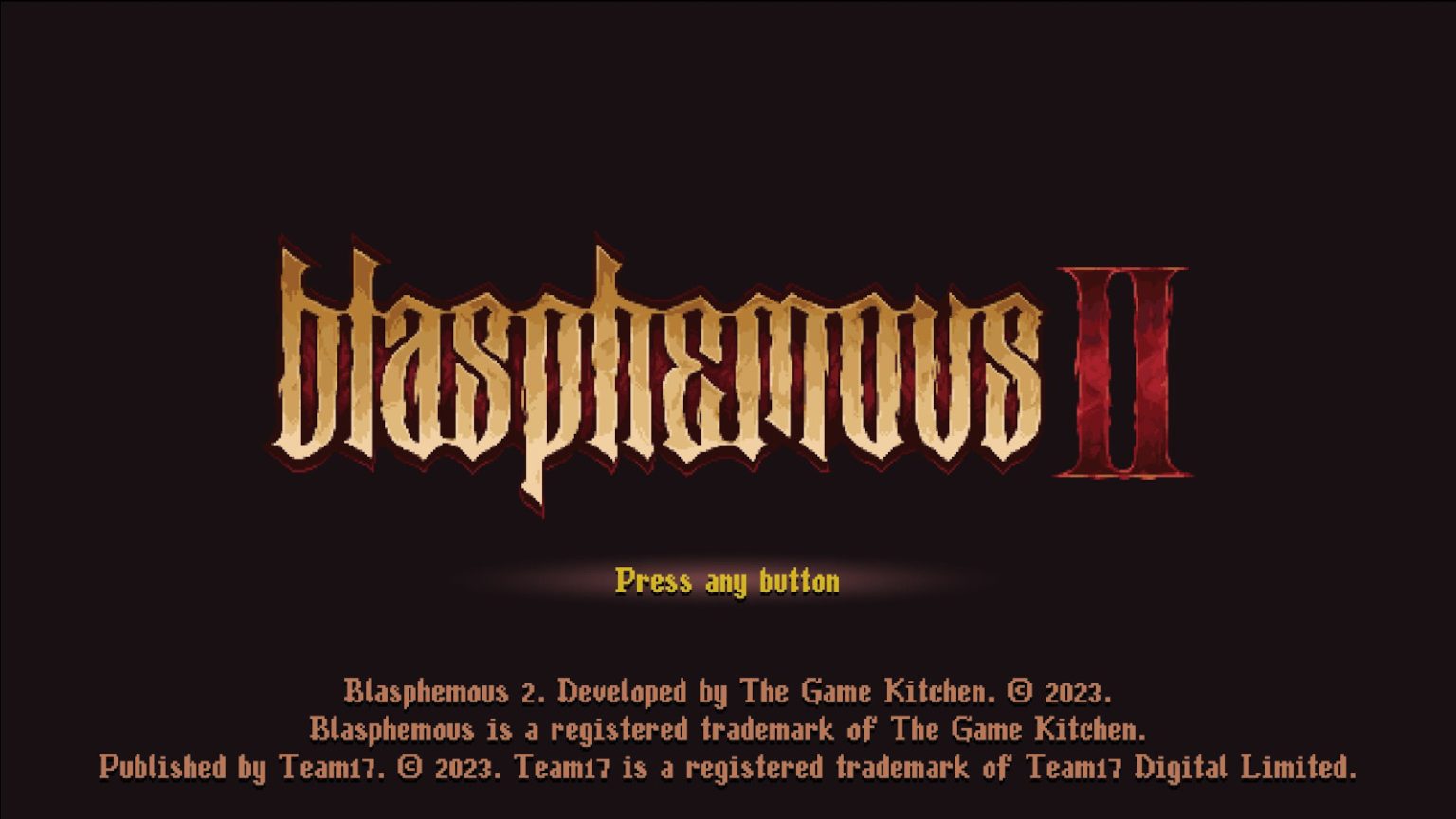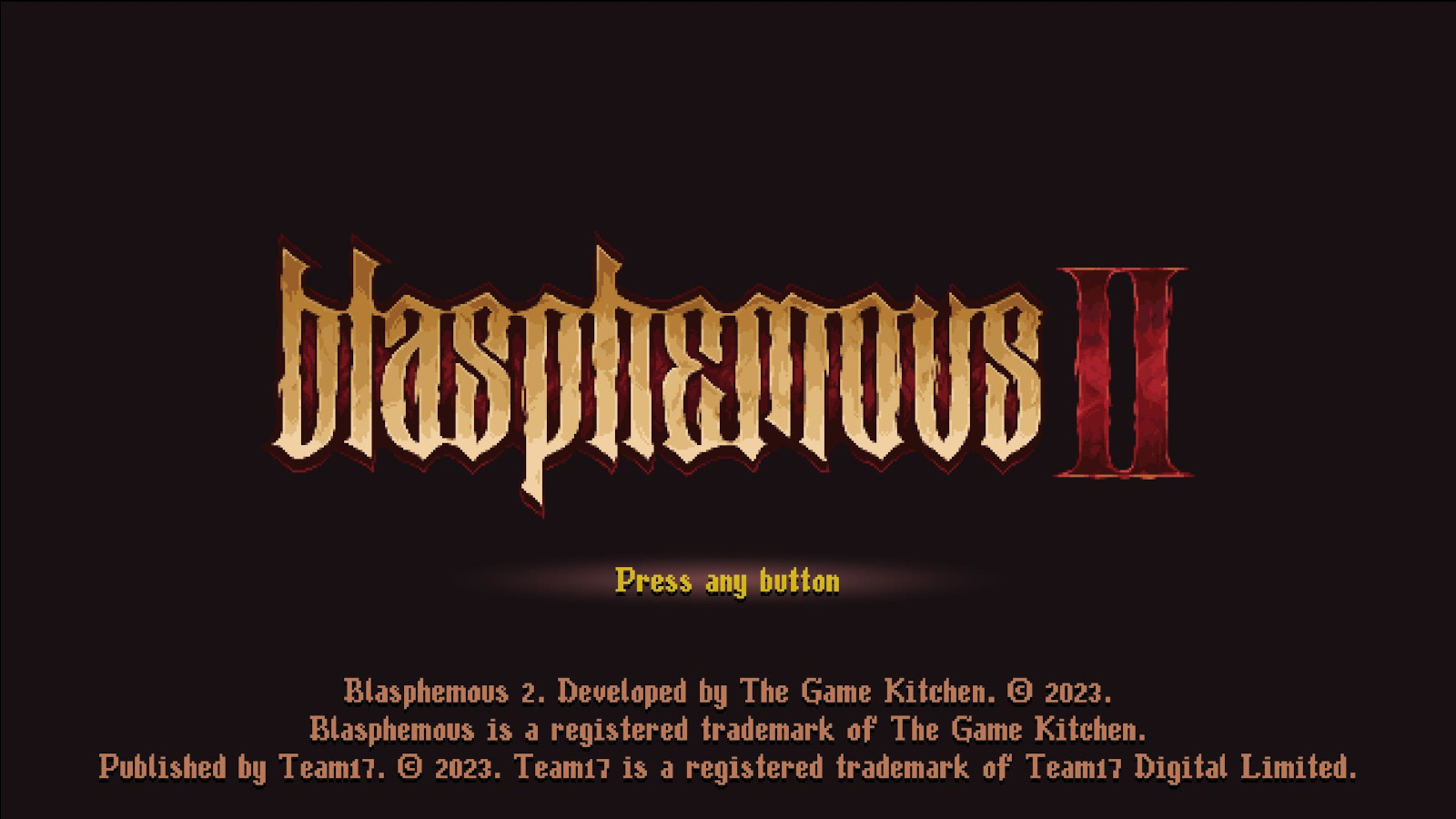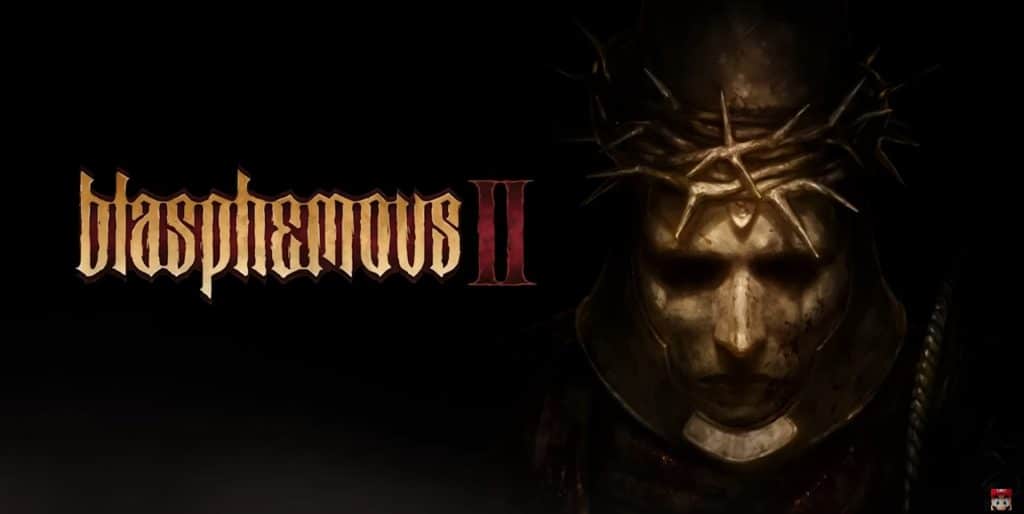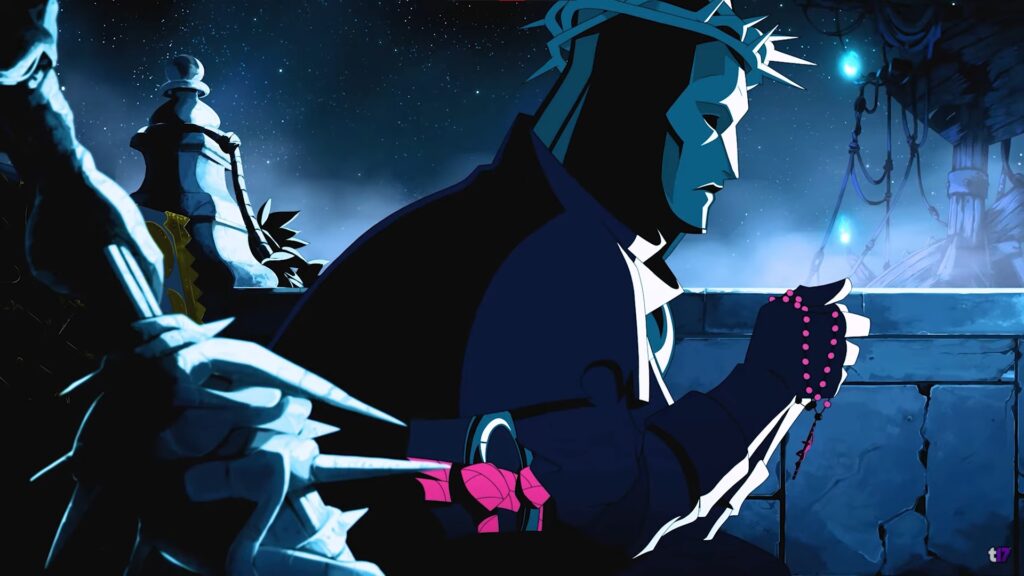Hoo, that was a blast. Well worth the wait! Blasphemous II was released on Steam, Xbox Series X|S, PS4/5, and the Nintendo Switch last August 25, and it lived up to the expectations set by its prequel, at least to me. It was a great time, and featured bosses who fully used the mechanics offered to the player both weapon-wise and skill-wise.
The story is set sometime after Blasphemous 1, and if the words of the final boss were anything to go by, it has been a thousand years since then.
The Penitent One, brought back by some higher force surpassing the Miracle or at least against it, now stands in the way of the birth of the being inside the heart-shaped womb that hung from the sky. Fighting through the new form of the land of Cvstodia which was built on top of the old one, whether destroyed or buried under. Instead of the large misshapen monstrosities serving as the main enemy in each area, there were numerous figures blessed and twisted by the Grievous Miracle’s return, namely a few figures that held the keys to the mystery of this new Cvstodia, and at their head, is the First Penitent.
From beginning to end, it was another slew of misery upon misery, tragedy after tragedy, this time brought forth by the hands of humans under the weakened Grievous Miracle, in the absence of the High Wills who was brought back from the prayers of a couple who simply wanted to have a child of their own. Crisanta’s absence is explained in the first cutscene, as she was defeated by the hands of the First Penitent, and in one last act of defiance, killed herself in front of him.
Battle after battle, expect to learn a lot of details that weave a great tapestry for its backstory and the story being woven as you play through to the conclusion, the bitter battles against Eviterno and the Incarnate Devotion, the being inside the Heart.

The gameplay, compared to its predecessor, is much more improved. Blasphemous it might be awkward for me to say this, pun definitely intended, if Blasphemous I was the original Castlevania, then Blasphemous II is Super Castlevania IV. The degree of control achievable by the player is widened, with two of three weapons allowed to hit upwards or diagonally mid-air (weapon-dependent though it may be), which allows players to hit enemies in different angles and go about using different ways to approach enemies and the various options each weapon gives you.
Parrying still carries most of the combat, with perfect parries automatically dealing the most damage for the Rapier & Dagger and the Scimitar. The weapons are varied from the aforementioned two along with a censure that is used like a giant flail, which is the power type in your arsenal.
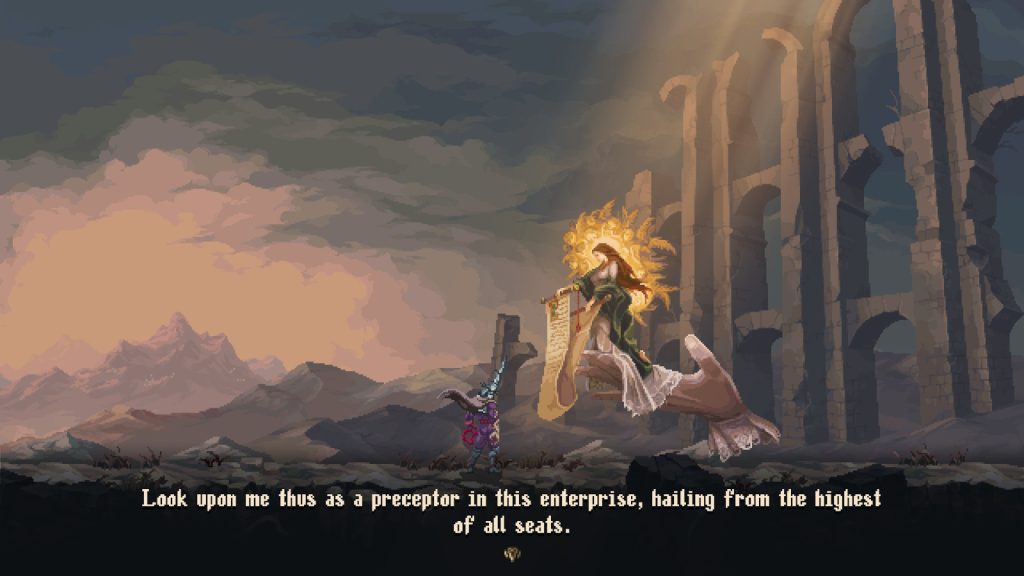
Going deeper and more technical, Sarmiento & Centella (Rapier & Dagger) is the light-hitting and very mobile weapon, with a charging mechanic that relies on your skill to remain undamaged for as long as possible, with each filled counter increasing damage output and is meant for players who prefer a high-risk high-reward playstyle.
Ruego Al Alba (Scimitar) is the most balanced weapon, meant to mirror the previous game’s Mea Culpa albeit with its own mechanic and meter, allowing players to access a limited-time mode in which they deal more damage and after unlocking the right upgrade, recover health as well as the meter to keep it going as long as possible until the meter runs out.
Veredicto (Incense Censure/War Flail) has a power-centric playstyle, and is reliant on the Fervor meter to keep the censure alight to deal even more damage until it is fully depleted, favoring players who stick to low-jumping to deal multiple hits in one go like using heavy weapons in later Metroidvania games.
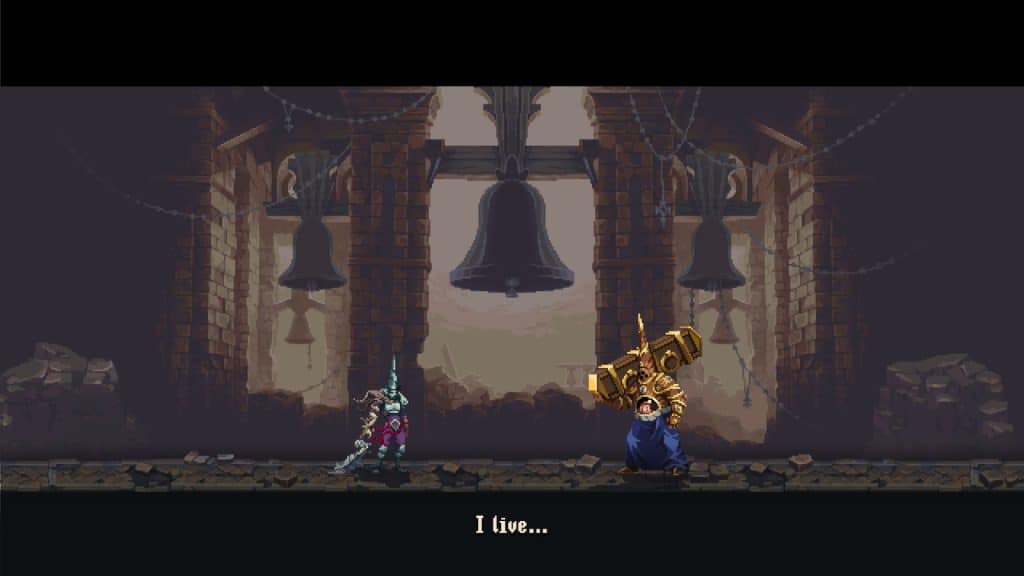
The soundtrack for the game is well done, framing the stage and backdrops well and giving you that sensation of being there when you’re focusing. The tense music in boss battles, the sound effects when going to a different area, or the visceral sound that plays when you attack or kill an enemy is such ear candy that it keeps your eyes glued to the screen and the ongoing action and carnage.
The requirements for getting the true ending, without spoiling anything, is quite the wall to scale. Some side storylines are required to be completed to the very end to get several key items that would have to be equipped which explains the need to backtrack to every area once you get all of the weapons and skills for Penitent One and is recommended if you are aiming for 100% completion of the game.

The difficulty is retained albeit the improvements make it seem diminished at some point until you reach the last legs of the game, where it swings back harder which underlines the need for you to work on your playstyle and upgrade weapons as you go. Finding the required upgrade material is a must if you want to survive the game long enough to get major progress in a single sitting (or if you have played the previous title and its New Game+), you probably would have an easier time getting used to the newer mechanics introduced in this game.
To sum it up, Blasphemous II is a great title and sequel. While it might not be as long as the previous title, there is still so much room for expansion DLCs for later, similar to what they did with the previous title. And hopefully, add even more bosses and a New Game+ system later down the line. In the immortal words of Joe Bob Briggs, Four Stars, check it out!



